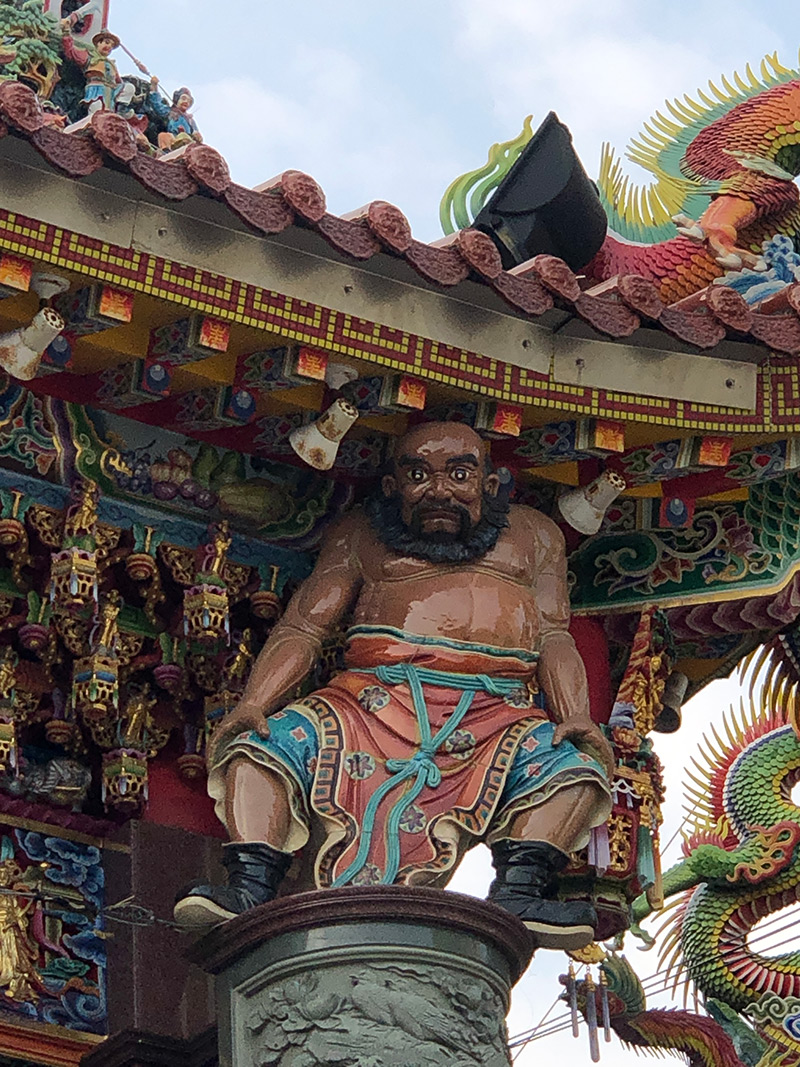by 李晨萱
The Delicious Flavor of a Century: Fenyang Wontons
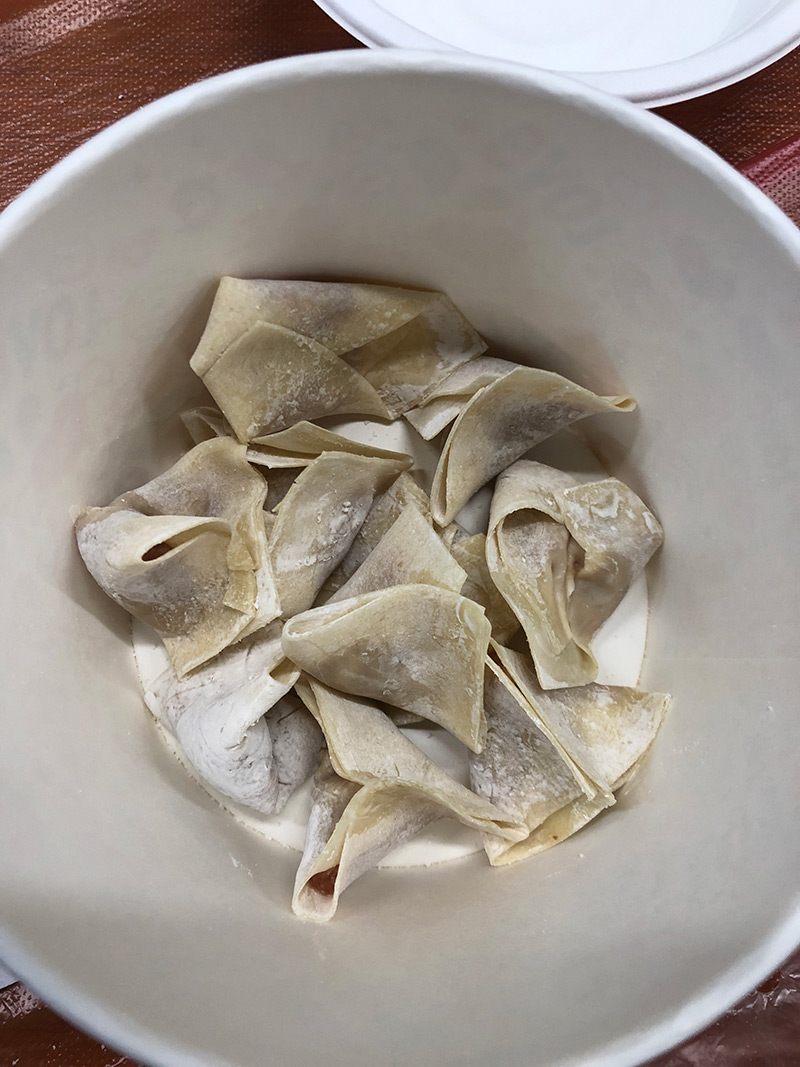
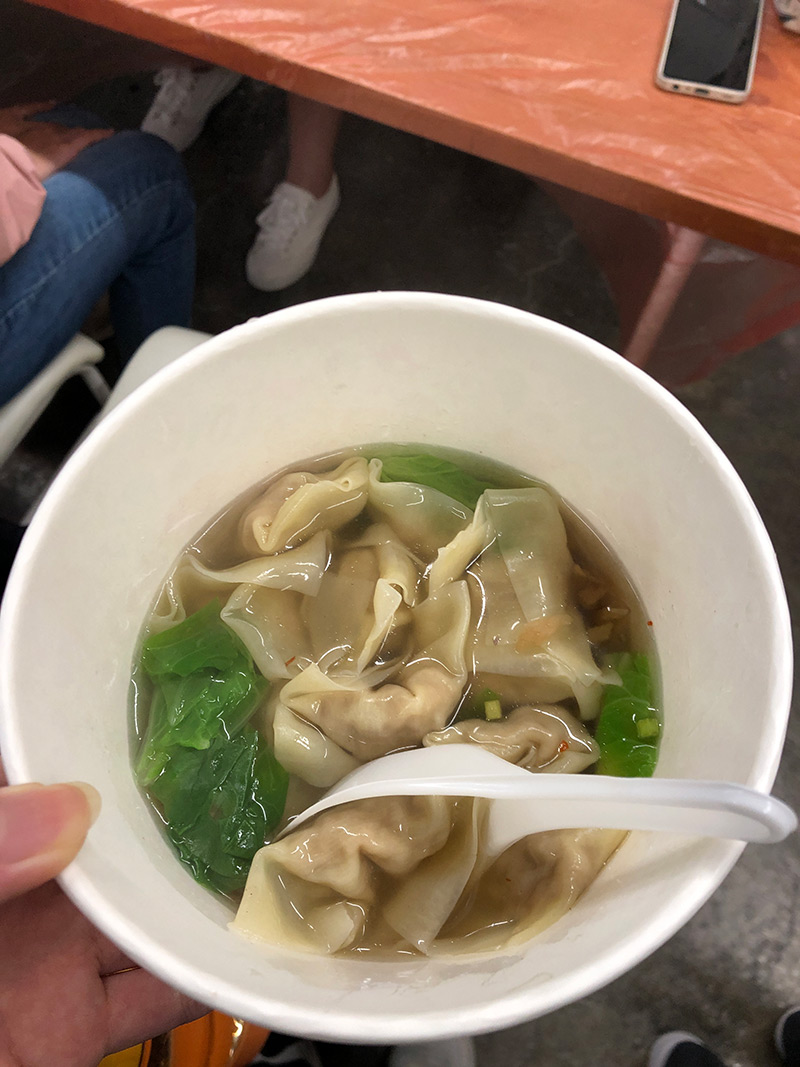
As for the Zuoying Old Town, the first thing that comes to mind is the local dish: Fenyang Wonton. The wrapper is thin yet elastic, and inside, the pork filling is fresh and not greasy. The hand-wrapped method has over 60 years of delicious heritage. The persistence of the old store has achieved great success with this excellent flavor. After so many years in Zuoying, it has become a traditional and popular dish for many tourists and locals alike.
The history of the development of Shengli Street
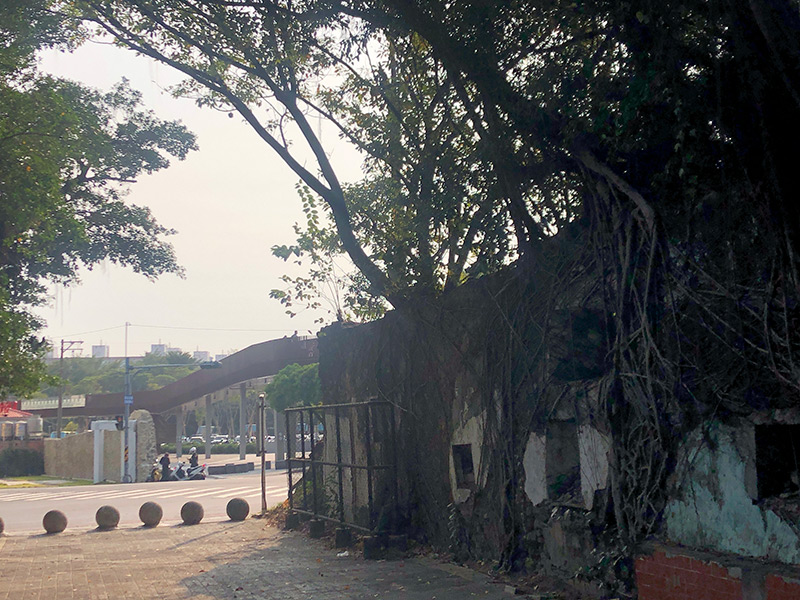
The passage to the left of the ancient town wall in this image is Shengli Street in the Zuoying district of Kaohsiung City. Non-locals may not be familiar with the history of the origin of this street. In the past, before this road was developed, it integrated with the ancient city wall. In the late Japanese colonial period in Taiwan, this road was developed to facilitate transportation and save travel time. However, locals believe that the development of Shengli Street played a significant role in the decline of this area. Developing Shengli Street was seen as equivalent to severing the head of the sacred Guishan (Turtle Mountain). Now it has become the Great Guishan and the Little Guishan. Therefore, locals believe that this construction directly harms the neighborhood due to the issue of disrupting the "Feng Shui."
The ancient town wall

The materials used in the construction of the ancient city wall are primarily sourced from coral reefs. The stones are closely fitted together to form a solid and robust gate for the ancient town. This is because, in the past, the local terrain was composed of coral reefs. Hence, this natural and local material was utilized as the main building material. In front of the gate on this side of the ancient town lies the famous Lotus Pond. In the past, lotus flowers were planted around this large pond. Additionally, nowadays, one can observe many people engaging in various water activities in the Lotus Pond, such as thrilling water skiing.
Tzu Chi Temple in Zuoying
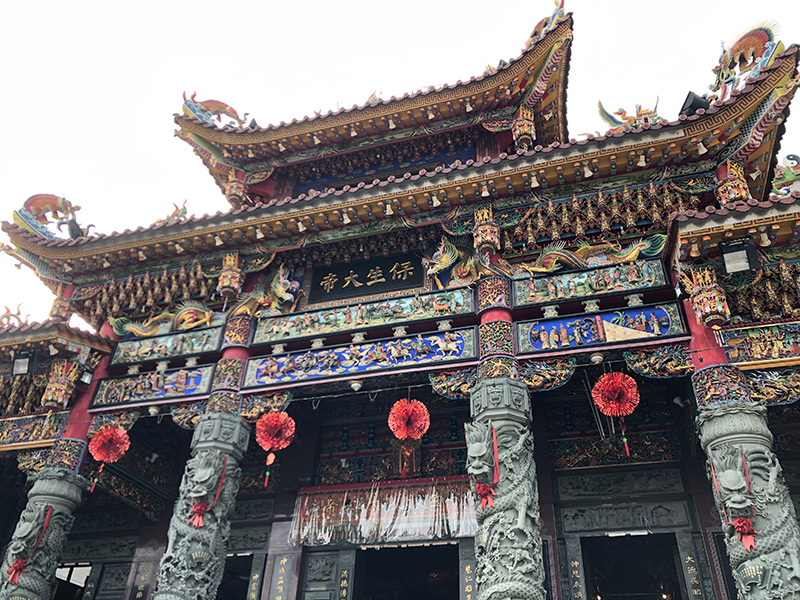
The final stop is the Tzu Chi Temple in Zuoying, located on the edge of the Lotus Pond and close to the Dragon and Tiger Pagodas. The plaque in the center of the temple clearly indicates that it is primarily dedicated to Emperor Baosheng. There are many exquisite stone carvings on the four stone pillars in front of the main entrance. After so many years, the skill of the craftsmen is still astonishing. What strongly contrasts with the monochrome stone carvings is the Cochin ceramic craftsmanship at the top of the temple (as shown in the following photo). Cochin ceramics have their origins in Tang Sanchai. In Taiwan, they often appear on the tops of traditional and ancient buildings, such as temples. Furthermore, the Cochin ceramic in the following image is glazed, displaying brighter and more vivid colors.
